The Apple iPhone 6s and iPhone 6s Plus Review
by Ryan Smith & Joshua Ho on November 2, 2015 8:00 AM EST- Posted in
- Smartphones
- Apple
- Mobile
- SoCs
- iPhone 6s
- iPhone 6s Plus
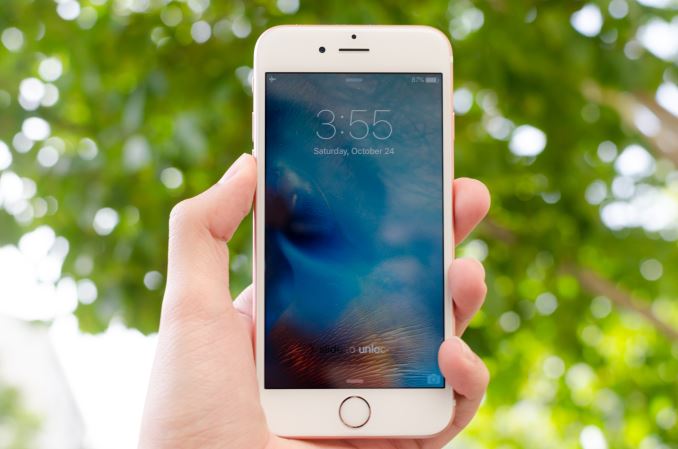
To be perfectly honest, this past year has been remarkably boring in the mobile segment. For whatever reason, phones have either stood still or regressed when it comes to overall quality. There are a few stand-outs that have been worth talking about like the Galaxy S6 lineup and the Galaxy Note5 lineup, but for the most part every phone I’ve reviewed this year has been disappointing in some way. I carry an iPhone 6 to make sure I stay current on changes in iOS, but my primary phone continues to be an HTC One M7. I was hoping to get a new Android phone this year, but so far nothing has really piqued my interest.
Part of the problem this year is that performance and battery life haven't been the most impressive in a lot of cases. By this point, it's really not a surprise that Snapdragon 810 doesn't deliver as much performance as it needs to for the amount of power that it draws. However, even independent of SoC it seems a lot of OEMs haven't really pushed the bar in design or attention to detail. Some phones have cameras with almost unacceptable post-processing quality, others continue to have poorly calibrated displays, and the ones that have none of those have problems with software experience or something else. In general, no Android phone I've seen this year really delivers everything that I'd want in a single package. There are phones that are clearly better than others, but nothing that rises to the level that I'd want before putting down a few hundred dollars.
In light of this lack of competition in the market, it's arguable that Apple is facing less competition than before. The iPhone 6s would continue to sell quite strongly even if this year's refresh was relatively minor as they would still end up quite strong competitively as they would be able to capitalize on momentum from previous years. If you were unfamiliar with the iPhone 6s and Apple's iPhone launch cycle, at first you might be convinced that Apple has done exactly that. However, in general the iPhone release cycle is such that industrial design is constant for two years at a time, so every other year sees a design refresh. When the design isn't refreshed, the phone often carries significant internal changes. In the past, the iPhone 3GS brought a better SoC, a faster modem, and a better camera. The iPhone 4S brought a new SoC, camera, and Siri. The iPhone 5s brought a new SoC, camera, and TouchID. In general, we can see a pretty clear pattern of evolution but it seems that with the 5s the refresh launches have generally brought new features as it has become insufficient to simply ship a faster SoC and possibly a modem and camera refresh to justify a new smartphone.
In the interest of diving into these changes at a high level, we can start with our usual spec table, which can give an idea for whether there's anything immediately worth talking about.
| Apple iPhone 6s and 6s Plus | ||||
| Apple iPhone 6 | Apple iPhone 6 Plus | Apple iPhone 6s | Apple iPhone 6s Plus | |
| SoC | Apple A8 2 x 1.3GHz Apple Typhoon |
Apple A9 2 x 1.85GHz Apple Twister |
||
| GPU | PowerVR GX6450 | PowerVR GT7600 | ||
| RAM | 1GB LPDDR3 | 2GB LPDDR4 | ||
| Display | 4.7-inch 1334 x 750 IPS LCD | 5.5-inch 1920 x 1080 IPS LCD | 4.7-inch 1334 x 750 IPS LCD | 5.5-inch 1920 x 1080 IPS LCD |
| Size / Mass | 138.1 x 67 x 6.9 mm, 129 grams | 158.1 x 77.8 x 7.1 mm, 172 grams | 138.3 x 67.1 x 7.1 mm, 143 grams | 158.2 x 77.9 x 7.3mm, 192 grams |
| Camera | Rear Facing 8MP iSight with 1.5µm pixels + True Tone Flash Front Facing 1.2MP F/2.2 |
Rear Facing 8MP iSight with 1.5µm pixels + True Tone Flash + OIS Front Facing 1.2MP F/2.2 |
Rear Facing 12MP iSight with 1.22µm pixels + True Tone Flash Front Facing 5MP F/2.2 + Retina Flash |
Rear Facing 12MP iSight with 1.22µm pixels + True Tone Flash + OIS Front Facing 5MP F/2.2 + Retina Flash |
| Storage | 16GB/64GB/128GB | |||
| I/O | Apple Lightning connector, 3.5mm headset | |||
| WiFi | 2.4/5GHz 1x1 802.11a/b/g/n/ac, BT 4.2, NFC | 2.4/5GHz 2x2 802.11a/b/g/n/ac, BT 4.2, NFC | ||
| Price | $549 (16GB) | $649 (16GB) | $649/749/849 16/64/128GB | $749/849/949 16/64/128GB |
At a high level, there are already a number of changes that we can talk about. The SoC is new and improved for this year with improved performance and power. The rear camera now supports 4K video recording and has higher resolution photos than what we’ve seen before. The front-facing camera is now higher resolution as well. The iPhone 6s finally has 2 GB of RAM, with improved power and bandwidth along with improved multi-tasking that comes from additional RAM. The modem now uses less power and also capable of higher throughput, as is the WiFi chipset.
Outside of these spec sheet changes, Apple has implemented a number of new features. One of the major highlights is 3D Touch, in which the display is force-sensitive and allows for new user interface actions based upon the amount of pressure applied to a point on the display. The front-facing camera now uses the display as an LED flash of sorts in low light, which measures ambient light in order to determine what white balance to use along with a backlight driver that temporarily spikes brightness to up to three times the normal maximum brightness for effective lighting. Both cameras now have Live Photos, which records a 1.5 second segment of video before and after the photo taken to capture a moment rather than an instant without the complication that comes with videos.
Design
Of course, before we can get into all of these changes we can start by focusing on the most immediate change, which is the design. For those that are unfamiliar with Apple’s iPhone launch cycle, the S launch cycle usually retains the same industrial design as the previous iPhone. As a result, the changes here are rather scarce. Those interested in a detailed description of the design should refer back to the iPhone 6 review.
However, there have been changes to the look and feel of the iPhone 6s lineup. The first, and most immediate change is the addition of a new color that Apple calls Rose Gold. This is much redder in tone than what we saw with the Apple Watch Edition, to the extent that it looks more like a light pink with a gold tinge rather than gold with a light pink tinge. I’m probably the last person in the world to consult on what color looks best, but I don’t really see anything wrong with this color.
Outside of color, the iPhone 6s lineup has changed in a noticeable way when it comes to materials and in-hand feel. The aluminum back cover is now 7000-series, which increases rigidity with the addition of zinc which increases yield strength, or the pressure needed to permanently deform the material. It’s likely that relative to the iPhone 6, ultimate tensile strength has also increased, although given that tensile strength is a test of how well the metal avoids breaking apart it’s unlikely that this property matters all that much. If you're actually reaching the ultimate tensile strength of a phone's back cover, you've probably already broken everything else in the phone.
With the use of this new aluminum back cover, the phone should be less susceptible to bending under extreme forces. I never had a problem with this when testing the iPhone 6 last year, but it shouldn’t be a problem now. Oddly enough, I did notice that the iPhone 6s is easier to grip than the iPhone 6, but the difference isn’t big enough that I would avoid using a case.
The other change is a new type of cover glass on the display, which uses a dual ion exchange process to make it tougher. According to Apple, this glass is the most durable of any in a smartphone today. A simple search with Google gives reason to suggest that Corning is making this glass as Corning holds a patent for this process. While we have no idea what Apple’s process is, the same dual ion exchange process occurs, which creates two distinct stressed layers that improves impact strength relative to a standard single ion exchange that is seen in Gorilla Glass.
Other than this, the design of the iPhone 6s remains quite good. The rounded edges and slightly curved glass help with in-hand comfort and things like the placement of the 3.5mm headphone jack on the bottom is a smart idea as the headphone jack is easily accessible when the phone is inside a pocket. We can talk about how the camera hump means that the phone doesn't rest completely flat on a table, but given that the phone has gotten about 15 grams heavier in both the iPhone 6s and 6s Plus I suspect it makes sense for Apple to avoid making the phone any thicker with extra battery than they have now. I would rather see thinner lines to insulate antennas here, but I suspect that there is some RF requirement that makes it difficult for this to happen.
Compared to something like the HTC One M9 which also has an aluminum unibody design Apple is far ahead in terms of overall ergonomics and cohesiveness. Relative to the Samsung Galaxy S6 I think the iPhone 6s is noticeably more comfortable due to the more rounded edges, but the iPhone 6s Plus and Galaxy Note 5 are pretty close in overall ergonomics. I do wish Apple would go to a front-ported speaker for the iPhone, but it seems that this is unlikely to happen due to the home button and bezel constraints.


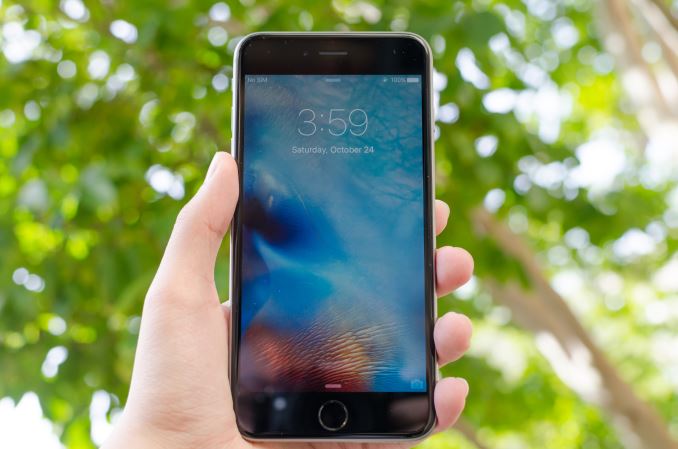
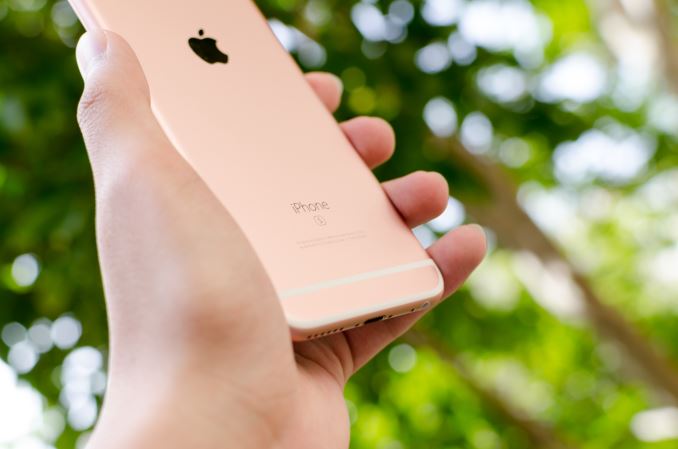
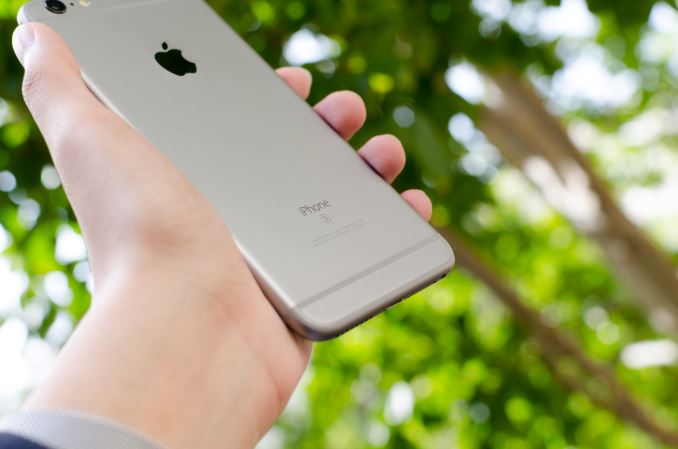
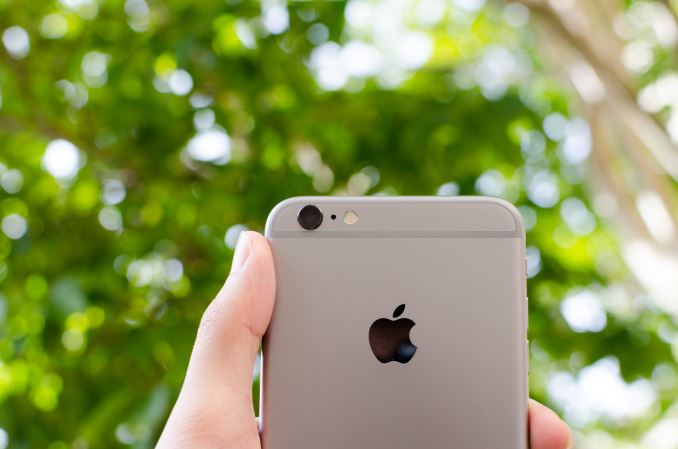
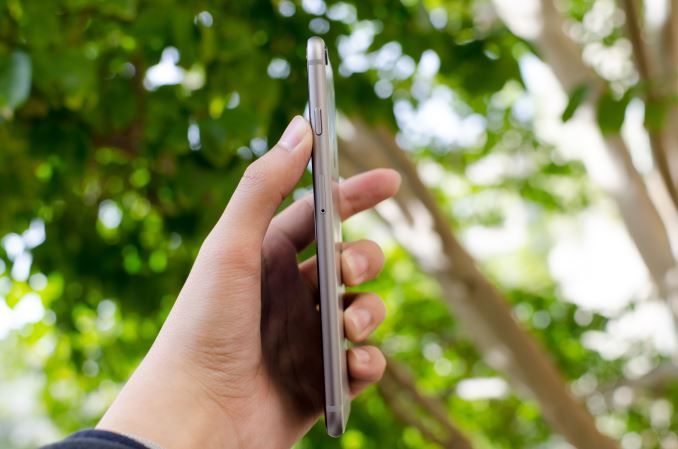
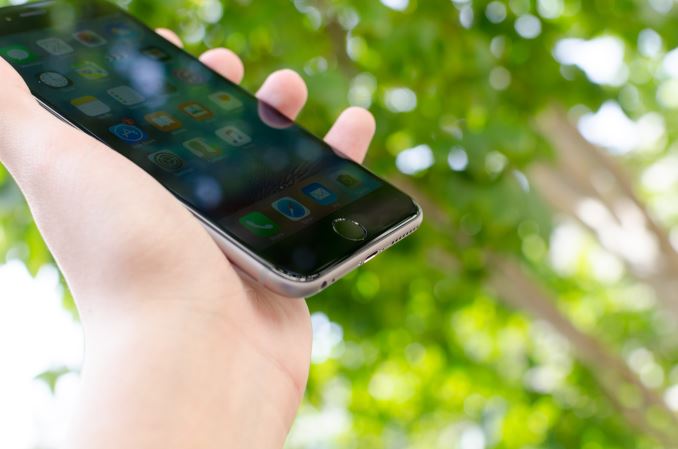
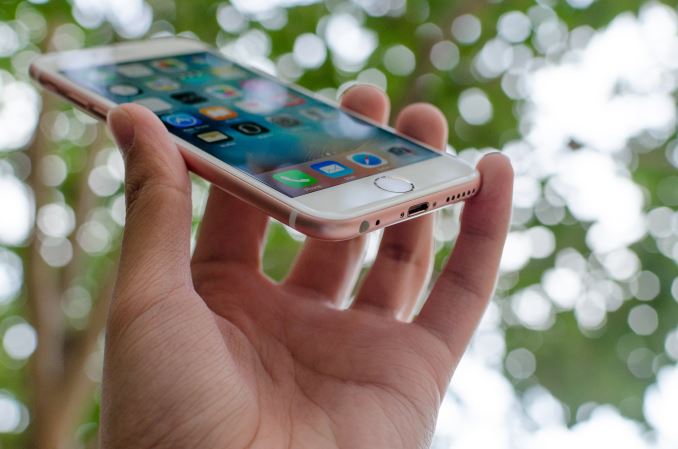








531 Comments
View All Comments
StormyParis - Tuesday, November 3, 2015 - link
I don't do 3D games, so I don't really care about gaming performance. I'll take a crisp display anytime.R. Hunt - Tuesday, November 3, 2015 - link
Same here. Besides, I think Samsung's displays are superior because of Amoled, not because of higher pixel density.MattL - Tuesday, November 3, 2015 - link
Though they are superior in both quality and higher pixel density. Don't get me wrong, iPhone uses the best of phone LCD screens, but they just can't top OLED screens and they haven't for the last couple generations.RealityMonster - Tuesday, November 3, 2015 - link
The pixel density is an illusion--it's just killing your battery. At normal viewing distances, you can't see the pixels at all at iPhone resolutions. The numbers are nice and big for the newer displays, but they're super wasteful.KoolAidMan1 - Tuesday, November 3, 2015 - link
But hey, who cares about practicality and real world returns when you have numbers on a specsheet to brag about, right?RealityMonster - Wednesday, November 4, 2015 - link
Probably more to the point, when you're racing to the bottom in price and trying to differentiate yourself from the Android phone next to you, if you don't have bigger numbers, nobody's going to care about you. Android phones are definitely less pricey, but there's a penalty to pay for that.FL777 - Friday, November 6, 2015 - link
Hmmmm you are not corrrect. When you zoom in with the S6 or Note 5 it becomes relevant. Further every major professional reviewer has rated the S6 and Note 5 displays as the best. Displaymate, one of the most objective and respected display reviewers in the world, have rated the Note 5 display as the best display ever on a smartphone. The Samsung S6 is not far behind.Further, the Note 5 display doesn't sap the battery to the point that the phone will not perform. The Note 5 has one of the better battery lives in smartphones - so it is VERY practical. Further, Samsung will replace the battery for a whopping $45.00 when it wears out. In every way, Samsung is just becoming a better phone than Apple's iPhone.
blackcrayon - Tuesday, November 3, 2015 - link
Still it implies the display can't be properly driven by the underlying hardware, which is a travesty. It's another reason why the UI is never as smooth as it should be.FL777 - Friday, November 6, 2015 - link
Damn you are just plain ignorant! You obviously don't own the S6 or the Note 5 or you would make such stupid, ignorant remarks. The Note 5 is several months old and it STILL competes with the iPhone 6S in most speed categories. The Nexus 6P actually beats the iPhone 6S in real world speed tests.I get that you don't like Android phones but at the very least you can read some reviews before you make such poorly educated, juvenile remarks.
FL777 - Friday, November 6, 2015 - link
You're right, the S6 display does tax the phone's battery, I own the S6 and I can attest to that. However, the Note 5 does much better on this issue and frankly kicks the iPhone's ass. Further, you are incorrect, both the Note 5 and S6 perform well in ed tests compared to the iPhone 6S.And yes, my comment still stands, the iPhone's display is embarrassing compared to Samsung's displays. Every professional reviewer on the planet confirms this including Displaymate - one of the most highly regarded display reviewers in the world.
In the end, Apple's iPhones are becoming less and less competitive with the new top tier Android phones in several important categories. Tim Cook, Apples radical homosexual CEO, is doing a terrible job running the company, despite Apples profits. Apple's profits are a result of Steve Job's genius and the iPhone was Job's creation.